-
Posts
2,946 -
Joined
-
Last visited
Content Type
Profiles
Forums
Gallery
Events
Posts posted by Hubac's Historian
-
-
I haven’t built a model, yet, that has photo-etch parts made for it, but PE offers a higher degree of sharpness to things like the rows of stern balusters, beneath the windows. Speaking of Daniel’s set, in particular, things like the plastic window mullions, which are kind of heavy and out of scale looking (the limitations of plastic moulding), become much lighter and refined looking. In the case of Heller Victory, Daniel has taken an already excellent kit and elevated it a couple of notches. That being said, scraping all of the existing detail from the stern and quarter galleries is a significant undertaking. Different builders take different approaches. Some like to cut the bulk away with a hobby knife, I like to waste away most of it with Dremel sanding drums and burrs. It is all a matter of personal preference, and deciding how far EXTRA you want to go with it. Hands-down - straight out of the box - it makes a fantastic model.
- Mexspur and Bill Morrison
-
 2
2
-
Personally, I don’t care for that salmony yellow color, even if it is correct for 1805. Port linings do look good, Bill!
-
I am doubtful that the deck surfaces were painted at all. The gun trucks would have made a mess of any sort of top-coat, and generally, the decks were regularly “holy-stoned” with bible-size stones to keep them clear and fresh. Dafi’s build indicates white interior planking and deck beams, and I believe the underside of deck planking. I believe that is what is indicated on the actual ship.
To answer your earlier question anout thickening port lids, I did add port linings to mine because the kit did not represent them:
My understanding of Victory, though, is that the lid interiors do not have this lapping step-rebate around their perimeter. As with virtually everything Heller Victory, you can probably find a detailed discussion of this on Dafi’s log.
And, I am sure I do have family in Kentucky. Until she got thrown and badly hurt, my mother jumped horses.
-
My mother was from Louisville. She and her mother left in 1955, when my mom was 15, and they re-settled in White Plains, NY. My mom never talked much about why they left, and she only remained in contact with a pair of cousins. My mom passed five years ago, and it is kind of incredible to think, sometimes, that I have an entire extended family out there that I know nothing about.
But, I digress…
You have begun your journey, and now you are equipped with the Evergreen that will help get you there. This is going to be fun!
-
For the record - I also wasn’t doing any sort of involved search. That was just the first representative link I found to show the product. If you shop around a little, on-line, you may be able to find better selection and pricing.
I am fortunate to still have at least one old-school hobby shop in NYC - Jan’s Hobby - where they carry a pretty wide assortment. The old French lady, there, charges $4 “cold, hard cash!!” for any individual packet of Evergreen. When you pay cash, she doesn’t charge sales tax.
If you hang out long enough, she will tell you stories about the Nazi occupation that she lived through. Anyway, I bought a bunch of different sizes and shapes, and am constantly finding new applications for all of it.
As for sizes, the great thing about 1:96/1:100 scale is that 1/8” equals 1’. From there, it is relatively easy to deduce the scale sizes of any component. In the end, it doesn’t need to be EXACTLY right, but at least close. If anything - err on the side of a little too small, rather than too big.
If it is any encouragement to you - this thickening of the gun ports is the very first modification I made to my SR project. In fact, it was the first significant alteration I had ever made to any out-of-box kit. After that small success, I just kept on adding and modifying. While it is true that I had complimentary skill sets, going into the project, my skill set has grown exponentially as a result of the project.
Once you get a taste for modification and scratch-building, the hobby takes on entirely new dimensions. You literally learn to “think outside the box.”
-
It comes in all different shapes and sizes and in sheets of varying thickness. It is fantastic for scratch-work because it is relatively soft:
-
I’m glad that Ian mentioned this about using Evergreen to frame-out the gunport openings. In my opinion, no matter how well you paint and assemble a plastic ship model, the unrealistically thin hull depth, through the gunports, draws way too much attention to the fact that this is a plastic model.
Because Heller Victory is going to be a big project, anyway, why not go the extra mile, here? If this ends up being the one substantial modification you make, you will never regret it.
If you want to take it even a step further, use a slightly thicker plastic on the lowest gun deck, followed by a slightly less thick plastic for the middle deck; doing so, gives a sense of graduation in frame thickness that would be present on the real ship.
In 1:100, I used .125” square strip stock to frame the lower ports, and then .100” stock for the middle deck . I didn’t bother with the main deck ports, but I did increase the thickness of the caprail by .030”, because that is what your eye is drawn to.
-
The brushes I use are mostly inexpensive synthetics. I bought a variety set at Michaels that has held up really well, although there has been some edge distortion.
I really like the BLICK synthetics. Those hold their shape really well and clean easily. I bought a War-Hammer detail brush that is a synthetic and natural blend. I haven’t used that one yet.
Since I’m painting with acrylics, soap and water cleanup is all that is necessary, but I will periodically dip them in enamel thinner, when the ferrules start getting stiff.
The thing I like about the BLICK brushes is that the handles are super long, and I’ll steady the tail end of the handle on my cheek, as I’m cutting-in a line. This little trick affords me complete control over the brush.
-
That is a very nice English Man-O-War. The sails are particularly good. As for the authenticity of the design, Revell loosely approximated the known portraiture of England’s race-built galleons. It is not an extremely accurate representation, but it makes for a very attractive model, all the same. Like all the big kit manufacturers, at the time, they capitalized as much as possible on one design by spinning it off into another complementary design - in this case, the Spanish Galleon.
Yes, that is the case that I have hand-painted my entire model up until now. I will be airbrushing the ground colirs for the upper bulwarks, though, as I really want to avoid muddying up all the detail.
As for your yellow ocher stripes - I may be wrong, because I don’t have the kit in front of me, but I believe that Heller moulded fine lines that show exacty what the top and bottom boundaries of each stripe should be. To follow the run of the wales would be more consistent with a significantly earlier period of time, and not the 1805 time-frame that the stock kit represents. It is up to you, of course, to proceed as you wish.
-
-
Simply from the standpoint of the actual ship still being in existence - Heller Victory is the finer kit, and probably the finest plastic sailing ship kit in existence.
Heller Soleil Royal is an extremely close copy of the Tanneron model in the Musee de la Marine, in Paris, from the mid-1830’s. Out of the box, as a representation of what French ships may have looked like in the last 5th of the 17th C. - it is the best commercial kit available. It is seriously flawed, in numerous respects, yet Heller made an admirable attempt to fill-in the numerous blanks left by Tanneron.
Airfix Vasa and Prince are technically more accurate, but only because they could measure directly from the real ship (Vasa), and from the Science Museum model (Prince). Likewise, there are very few contemporary models of French ships, from SR’s time, from which to draw conclusions/comparisons.
While the English made full “dockyard” models, in wood, to sell the proposal for a new ship, the French made wax models for the proposals of decor, in the mid-to-late 17th C., and none of these earliest models still exist. There is only a fragmentary patch-work of original drawings and portraits from the 1670s and 1680s.
The Heller Soleil Royal is flawed, but salvageable; this idea is the entire thrust behind my build-log of this kit.
-
-
Yes, Alex certainly seems committed to making as fine a model as he can with Daniel’s PE set. I am tempted to ask Daniel whether his Victory deadeye chains can be adapted to Soleil Royal, as that would save me a ton of tedious scratch-chandlery.
As for painting, I like to paint large parts, like the hull halves as individual components and then join/fill/fair, and finally, re-touch. Particularly with these large 1:100 models, the assembled hull is cumbersome and can be difficult to steady and maneuver when you are trying to pick out details with a brush.
I have had to paint significant portions of the stern, on my current project, after assembly, and this was an extremely tedious labor, in order to maintain the same standard that I had set, previously. In some instances, this could not be avoided, but I realized after the fact, that I could have painted my window sub-assembly, for example, off the model, and before installation.
Unlike Alex, though, I do most of my paint work by hand. Using an airbrush makes it easier to do your main assembly of the hull halves and lower deck, before painting, much less laborious. I suppose it boils down to what you are comfortable with.
-
-
There is certainly no shortage of Youtubers posting their experience of building this kit.
-
Ha - yes! I was making furniture for our home for a good number of years until we ran out of space for larger pieces. That’s when I decided to get back into model making. And, no, I never mind questions. I may not always have a good or clear answer, but rest assured that someone, here, does.
-
What you would be painting red, here, is the border and cross-hatch of the mullion framing. The instructions are not clear, but that is what is intended.
-
That burl graining looks fantastic!
- thibaultron, shipman, Keith Black and 1 other
-
 4
4
-
That is an excellent application for styrofoam!
- EJ_L and Ulises Victoria
-
 2
2
-
Thank you, Henry and John. Henry, I remember that phase of your build, and I thought that was an ingenious use of this awkward gap in the joint. I would do the same, but for the fact that I have lowered the fore and main channels to this upper main wale, so that my chains will now be secured at the middle deck level.
Speaking of that troublesome joint - the lapping-lip of the port side bulwark piece is significantly thicker than the rebate it fits into on the hull. This creates an awkward landing for my waist spirketting/joint re-enforcement. In order to create a flush landing, I furred-out the hull side of the joint with .030 styrene strip:
I then sanded away any high spots for a flush mating surface, while protecting the painted deck with painters’ tape. Weirdly, this problem does not exist on the starboard side.
I’ve also been making a pair of hanging knees for each side, that will be visible beneath the break of the forecastle deck:
The top edge of these knees doesn’t have to reflect the deck camber because they will be situated behind the deck beams which are cambered. In order to include this aft-most knee, without placing it beneath the beam, I am increasing the length of the forecastle deck so that it comes to within about an 1/8” of the waist timberhead railing.
This small increase in deck length (say that three times fast 😂) will help with the layout of the forecastle; I need room for the deck railing supporting knees, the stove chimneys, and the capstan drum. There must be enough clearance for the capstan bars to travel without interfering with the fore bitts. There is some debate as to whether a forecastle capstan would really have been a feature of a First-Rate from this time, however the Louis Quinze model features a vacant space where the drum should be:
Above, you can see the locking pawls and the hole for the drum barrel. I have found other evidence on contemporary and near contemporary models to support this detail. I’m excited about that because I really wanted to scratch-build a capstan.
I knew before I started that the rear gallery bulwark would be a tremendous amount of work, but it was time well-spent. As is my practice, I like to build-up a part like this as a series of layers of varying thicknesses, which results in a part that has depth and enhanced detail. Here is a montage of the progression:
Necessarily, this process begins from the center, and proceeds out, towards the ends. The critical consideration is that both the bottom and top edges of this railing are beveled to account for the railings back-raking angle. Each layer has to be optimally placed so that not too much material is removed from the lower edge. This is especially important for the lattice pieces. Before moving-on to the next element layer, I make sure to fair these top and bottom bevels, so that I have a reliable reference for placing the next layer.
This fairing step was critically important for these scroll brackets that flank the nameplate.
Another consideration is that the outermost pair of pilaster mouldings is just slightly wider than the innermost pair. They all had to be individually fit.
Just before modeling of the scrolls and central lattice:
Afterwards:
There is still some modeling to do yet, and I still need to add tiny scroll ornaments around the nameplate, but here is the part taped in-place to give an overall impression:
I didn’t set out to make this bulwark railing wider at the center, and more narrow at the corner joint, but it was necessary to taper the ends, in order to come down flush with the side bulwark pieces.
I probably won’t focus on painting this part until I am closer to actually installing it, but I am satisfied with what I think is a rather stark improvement over the stock kit railing:
As ever, thank you for your likes, comments and looking-in!
-
Everyone here has said it all, but I’ll say it again.
Extraordinary!
- thibaultron, shipman, mtaylor and 1 other
-
 4
4
-
Thank you, Michael!
The thing about the Heller Prestige Series is that these kits date back to a time when kits were still prototyped and mastered, more or less, by hand. Naturally, there is going to be some degree of a-symmetry engineered into the kit. I am sure that I have exacerbated those issues, though. To use the most shop-worn cliche - it is what it is, and SR slowly inches forward.
-
All very true, Druxey. I mention it more for the sake of anyone else attempting a similar waterline-ectomy. I might have approached things a little differently, if I had a better idea how these large hull parts would behave, after you remove the structure that maintains their shape. Or, maybe I would still have ended up in the same place.
Thank you for checking in!
-
Thank you very much, Kevin! The reality is that I am quite slow, but meticulous and committed to the project. What I am doing is not really magic, but the product of time.
Doris, on the other hand, truly is supernatural. She does what she does while simultaneously working on other equally detailed projects, and she works very quickly. I hope to gently persuade her to do a French ship, someday, where her sculpture talents will be fully expressed.
- EJ_L, Bill Morrison and mtaylor
-
 3
3




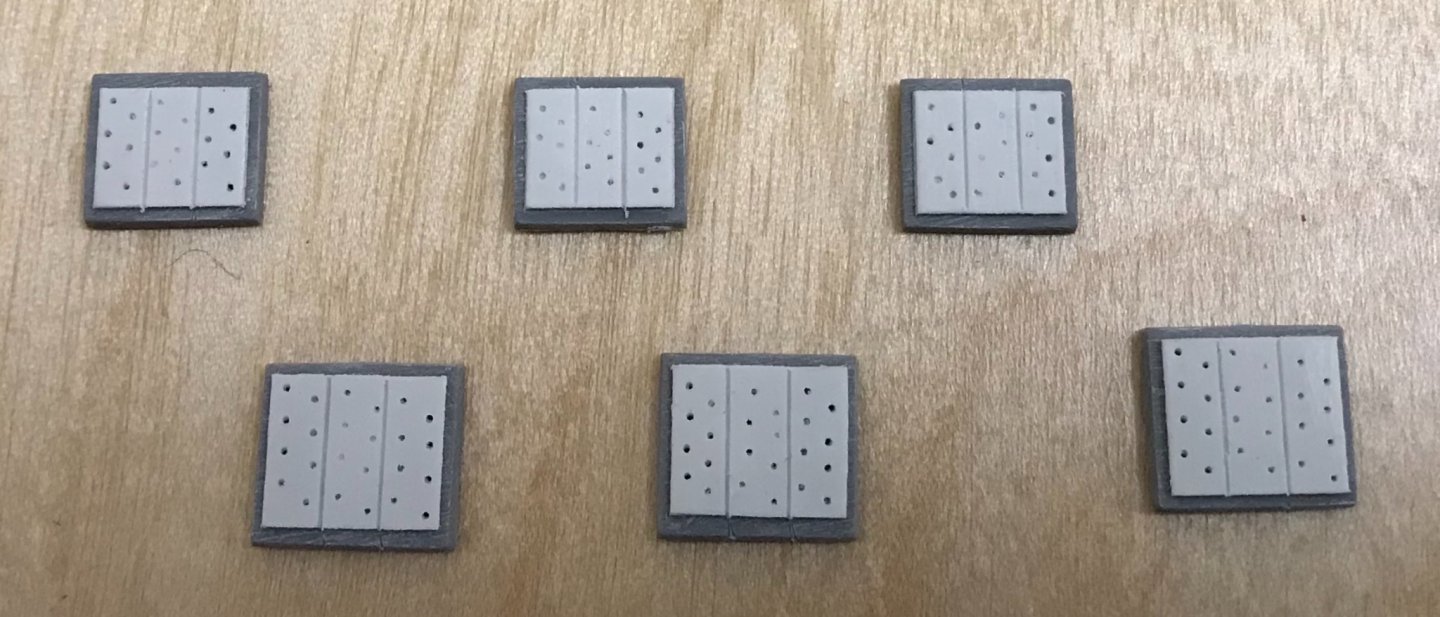


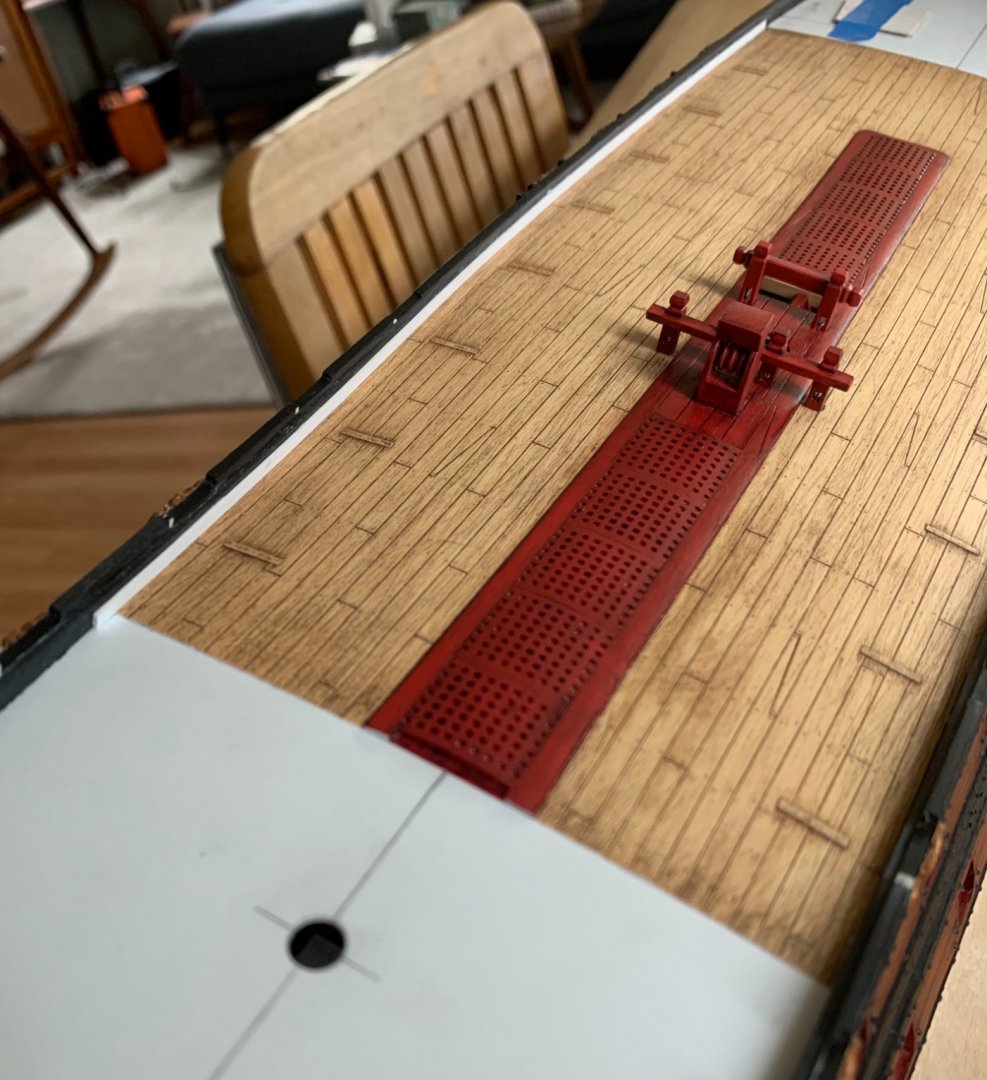
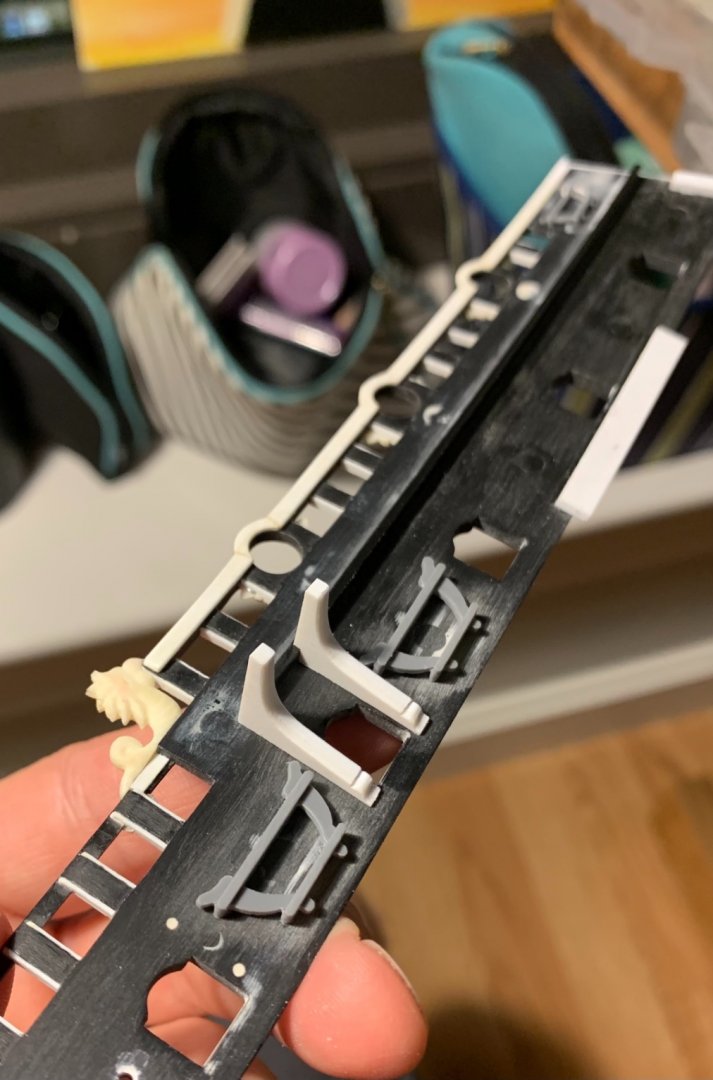
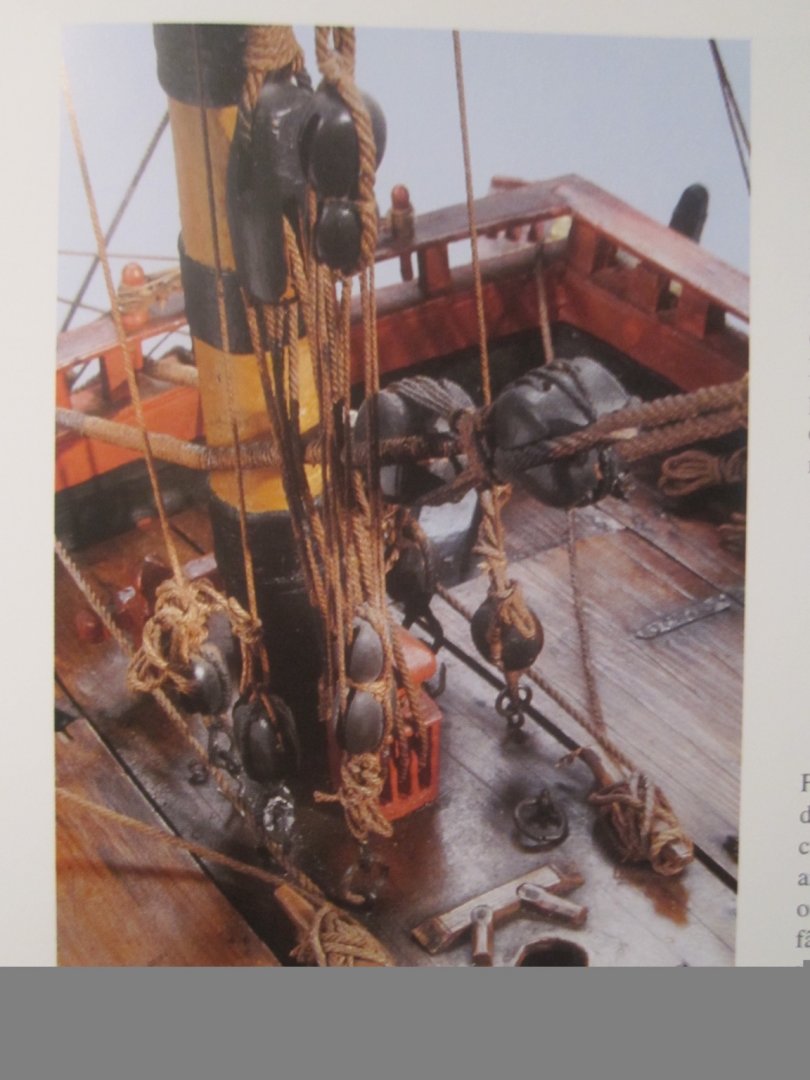
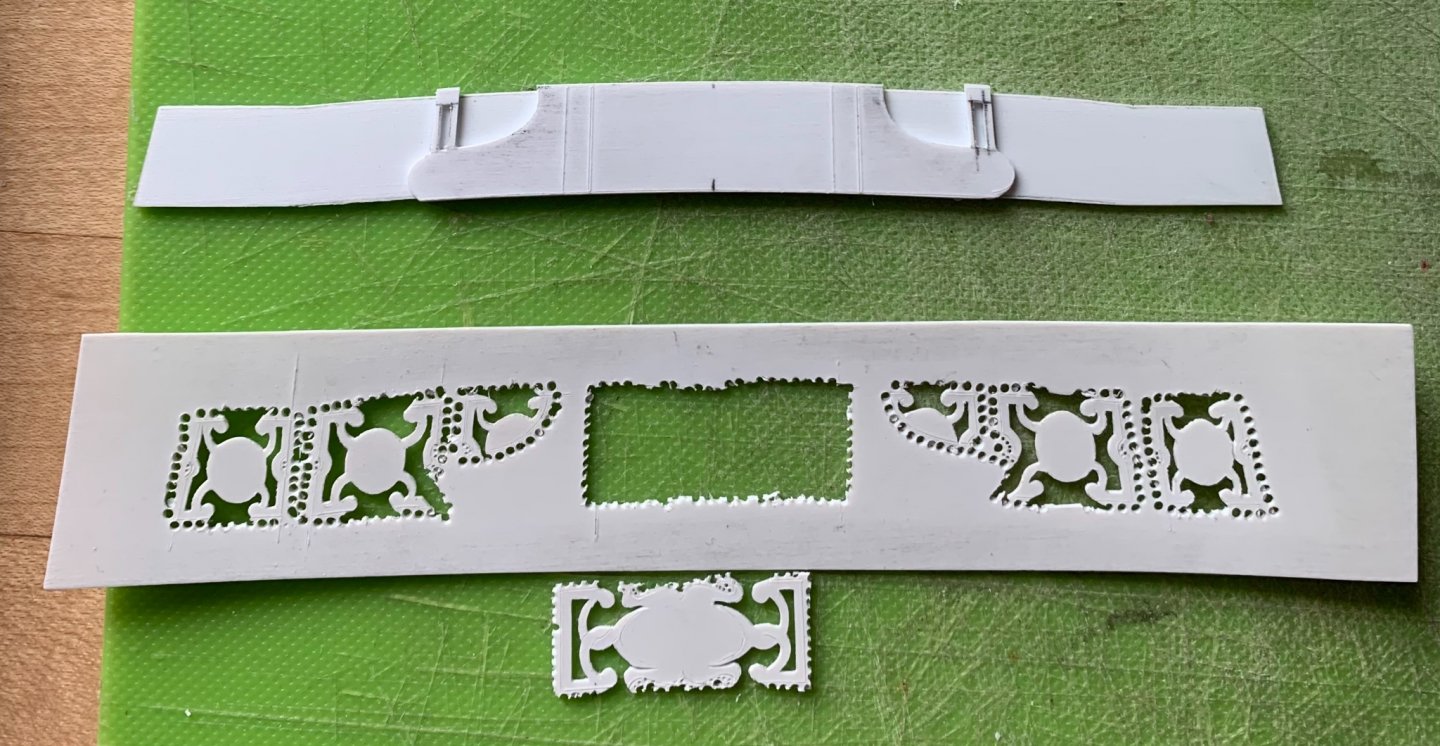


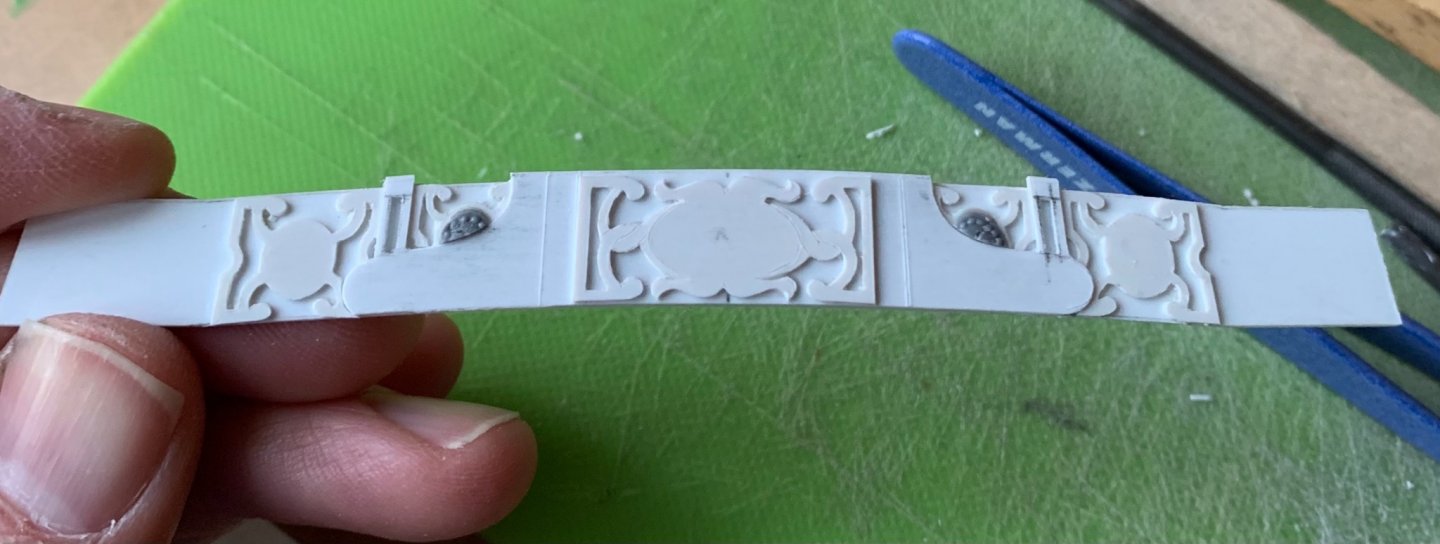







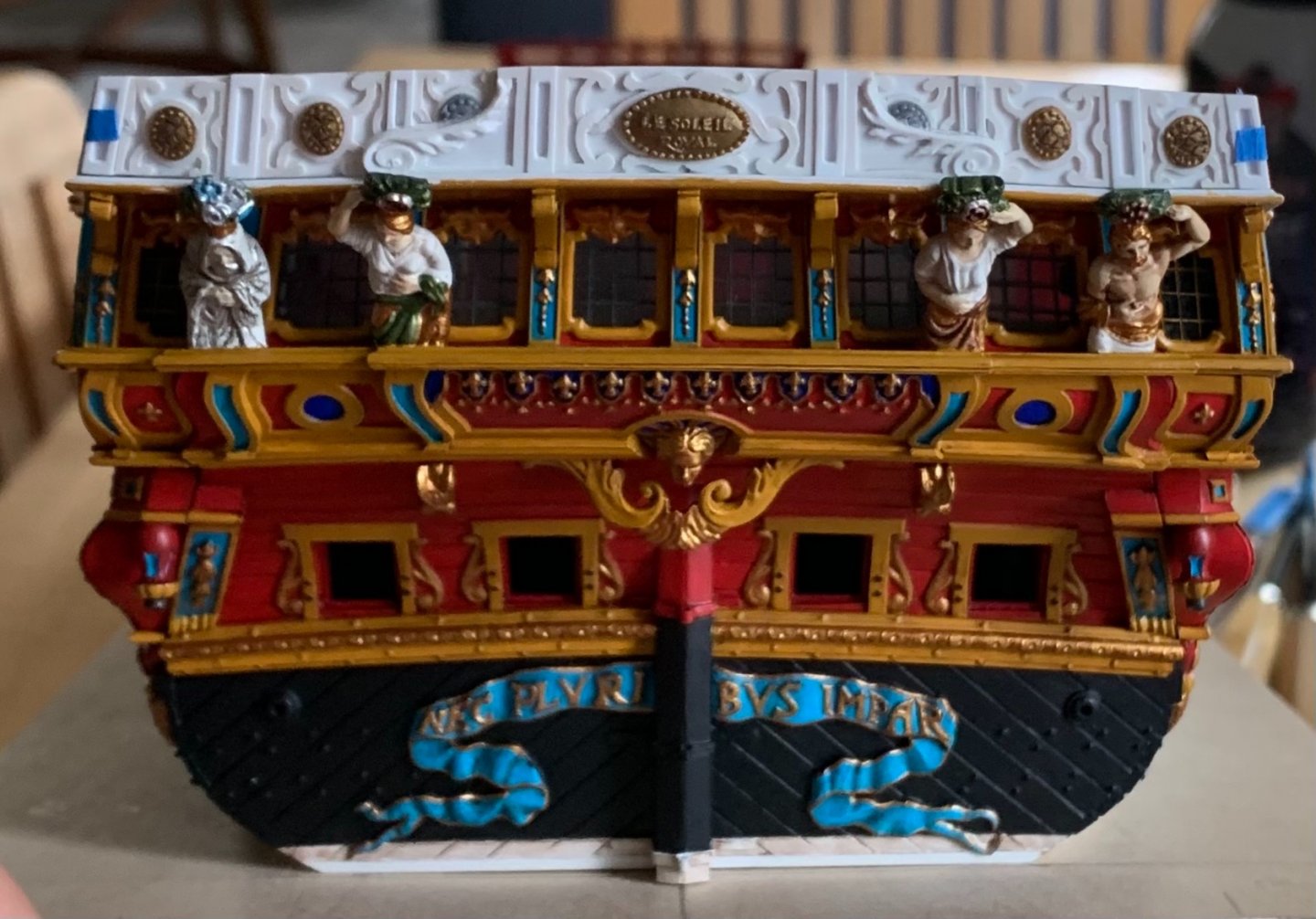

New England Stonington Dragger by FriedClams - FINISHED - 1:48 POB
in - Build logs for subjects built 1901 - Present Day
Posted
Oh, this is awesome! I love this model and can’t wait to see it at the show. I look forward to meeting you, Gary.